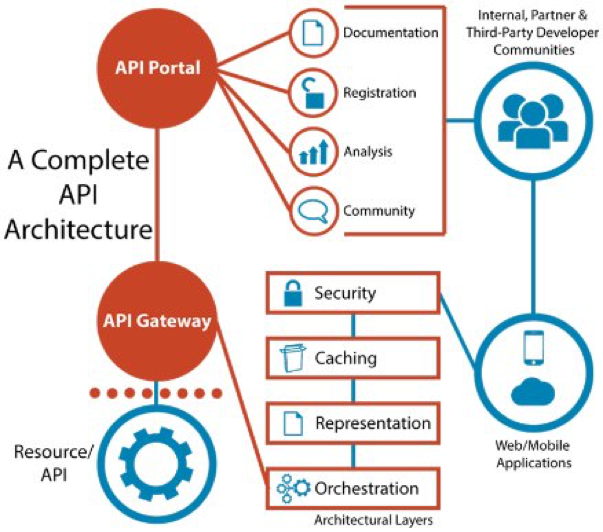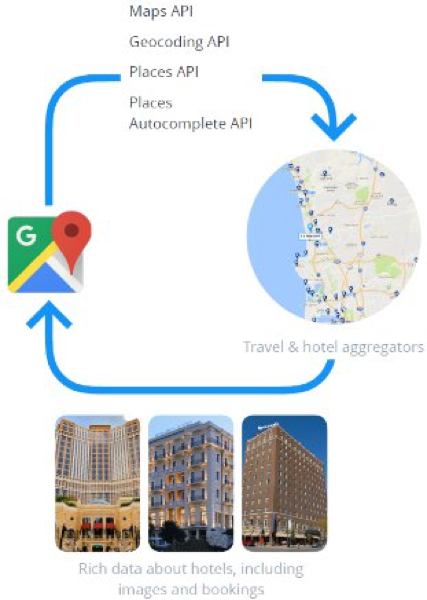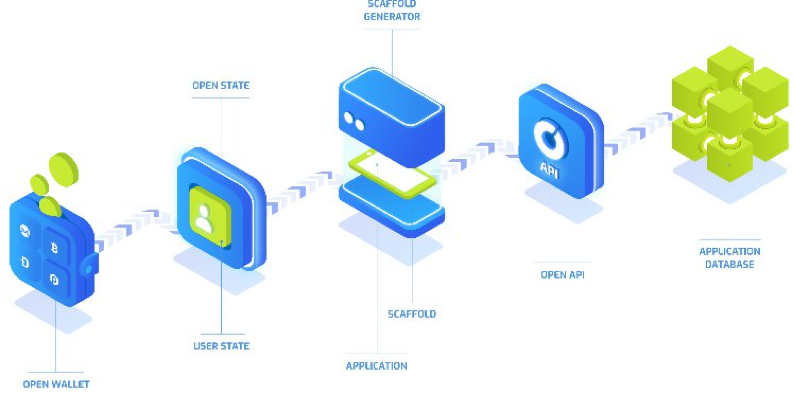Latest news about Bitcoin and all cryptocurrencies. Your daily crypto news habit.
If you’re reading this article, you might have tapped a link from a social media app on your smartphone, as you take a break from working digitally from home. You are already hyperconnected, a concept that describes how technology enables everyone and everything to be interlinked.
At an individual level, we stay connected because we want to have information just as much as we want to share it. The recent focus on diplomatic success in the Korean peninsula has put a heartwarming story in the spotlight. One where people from the South put rice and USB sticks with music and movies in plastic bottles, which they then throw in the river for their brothers in the north to pick them up farther upstream. They are anticipating a near future where they can welcome one another with open arms and are “streaming” media in the meantime.
At a group level, we stay connected because transforming data into actionable information is crucial for progress. Humans have evolved to their modern form about 200.000 years ago, but real progress began with the invention of writing, circa 3.000 BC, and the wheel 1.000 years later. Radio communication was invented ~130 years ago, but it took the internet to open up our world to endless communication. Our parents lived in a world where information technology did not exist, we live in a world where “data is the new oil” and our children will hopefully grow up in a world that will be wondering what oil was.
At a technology level, we stay connected via different Information Technology systems exchanging data with one another. There’s no official estimation about how many actual pieces of software are out there, but a rough guesstimate would put it at around 1 billion and growing each day.
Take Uber, it runs on your mobile operating system — which, by itself, is a collection of pieces of software, it has login, search, map, payment, rating, feedback, notifications, and support systems. Those are pieces of software working together in the backend, for which the Uber app itself is just a frontend. Now think about the number of different mobile apps, desktop applications and websites, which are the front-ends, and the complex mesh of servers running applications for transferring, processing, analyzing and securing information, which are the back-ends. The resulting complex ecosystem engulfing our entire planet, and its orbit, looks like a mesh of billions of computers running 1 billion of pieces of software, the majority of which talk to others.
All these pieces of software were built by different people for different purposes. A bank’s financial system is radically different from a factory’s operations management system, which is radically different from a vendor’s inventory management system, which again is very different from a retailer’s sales system. But for end-to-end supply chain automation to happen, these systems need to be integrated and talk to one another. They do so via APIs.
API is short for Application Programming Interface. Wikipedia defines it as a set of subroutine definitions, protocols, and tools for building application software. APIs allow developers to simply integrate their existing application with various other software backends, by exchanging the exact data that is needed.
That’s not interesting to understand if your mind closes to boring tech details. But if you have ever used a power socket you will quickly grasp the basic idea of an API. Instead of needing to understand the whole electrical grid, you only need to understand that a plug goes into a socket and your devices work. An API can do something very similar, where a complex system can be made easily accessible through a commonly understood point of entry. The API transforms a complex ‘electrical grid’ into a simple power socket.
While the above example is an oversimplification, at its core it can illustrate exactly how APIs enable multiple independent systems to integrate and exchange exactly the required information in the least amount of time, and why this is important. APIs have been around for a very long time and have been steadily shifting from being tactical assets, required in specific integrations, to strategic assets, enabling digital businesses to grow.
One good example is Google Maps. Google’s core business is selling ads, and they strive to create an ecosystem that captivates the attention of the users, from which they collect data to better serve them ads. While it is not Search or Gmail, Google Maps is one important element of this ecosystem, and arguably one of the best such products out there. It took Google years to build and improve on their product, and it has successfully kept users coming back for more, while also telling their friends about it.
Google did one important thing with Maps — they opened it up to everyone via APIs. Ever since 2005, any website and later on mobile app, can integrate Google Maps in one way or another. This injects crucial functionality in 3rd party products, allowing them to focus on developing other features in their software and just integrate the best location information available, instead of having to develop their own backend for that. In a single week, the Google Maps API serves information to over 2 million different apps.
The proliferation of APIs has allowed the emergence of entirely new digital ecosystems, with innovative features that open businesses up for new opportunities and enrich lives. The top digital companies systematically amount for the highest API traffic, with 25% digital companies driving 96% of the total API traffic in 2017. It’s no wonder that this powerful cycle of adoption and growth becomes even stronger, as organizations see how proper API management translates to direct market share increase and focus on developing skilled resources that are up to the task.
Finding capable developers is the mission and pain of any IT organization, but among the software developers out there, roughly 80% of medium seniority or above have API management skills. Compared to that, blockchain dev skills are almost nowhere to be found. An early 2018 study estimated that there are 14 job openings for every one blockchain developer, a figure that’s unlikely to decrease anytime soon. 100 new cryptocurrencies have been launched in the last month alone, adding up to a total of 1.759 at the time of writing. The problem stems from the fact that blockchain technology is new, and a lot of variations of the principles behind it are implemented in completely new programming concepts and languages, such as Solidity.
The lack of available knowledge is a huge pain point for businesses looking to benefit from the cryptographically secured immutable trustless automation that blockchain technology enables. The most sought-after functionality is payment with cryptocurrencies, as it is faster, cheaper, direct and can be triggered programmatically.
The OPEN Platform offers an API-oriented decentralized payment infrastructure that allows for easy cryptocurrencies integration into existing applications. It does so by linking the OPEN API to regular software, in a manner familiar to most developers, creating a “scaffold” or smart contract template that acts as a payment gateway and can easily be adapted to specific use cases.
Because it is API centric, the OPEN platform takes away all the complexity of integrating existing software with any kind of blockchain, meaning no adoptions are needed on any existing backend, for any existing or future cryptocurrency. Imagine, for example, automatic software license management, with application usage payment triggered by a licensing model programmatically embedded in smart contracts. This would remove the need for periodic paper contract renewals, ordering, license audits and drastically simplifies payment. All that needs to be done is for companies selling software to use the OPEN API in tandem with their customers.
The OPEN platform can support any payment scenario in enterprise environments, Software-as-a-Service scenario, video games and more, by providing the missing components applications need to accept cryptocurrency and the associated payment data. Any application payment scheme can be easily deployed, on any blockchain.
The blockchain revolution is poised to significantly change business verticals ranging from banking, finance and real estate to governance, education and entertainment. OPEN Protocol drastically reduces the complexity for cryptocurrency payments integration, and taps into $400B worth of cryptocurrency that is mostly sitting in wallets, allowing users to spend it wherever they want, and can give blockchain technology a significant adoption boost whilst ensuring that developers get paid immediately and fairly, without any cuts by app stores or delays in payment. If you are interested to learn more, check out https://www.openfuture.io/.
How the API Economy is Poised to Revolutionize the Blockchain was originally published in Hacker Noon on Medium, where people are continuing the conversation by highlighting and responding to this story.
Disclaimer
The views and opinions expressed in this article are solely those of the authors and do not reflect the views of Bitcoin Insider. Every investment and trading move involves risk - this is especially true for cryptocurrencies given their volatility. We strongly advise our readers to conduct their own research when making a decision.




